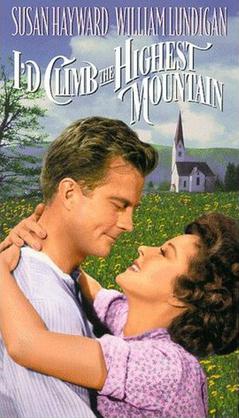| I'd Climb the Highest Mountain | |
|---|---|
 Video cover | |
| Directed by | Henry King |
| Written by | Lamar Trotti |
| Based on | A Circuit Rider's Wife 1910 novel by Corra Harris |
| Produced by | Lamar Trotti |
| Starring | Susan Hayward William Lundigan Rory Calhoun Barbara Bates Gene Lockhart Alexander Knox Lynn Bari |
| Cinematography | Edward Cronjager |
| Edited by | Barbara McLean |
| Music by | Sol Kaplan |
| Distributed by | Twentieth Century-Fox |
Release dates | |
Running time | 88 minutes |
| Country | United States |
| Language | English |
| Box office | $2,150,000 (US rentals) [3] [4] |
I'd Climb the Highest Mountain is a 1951 Technicolor religious drama film directed by Henry King, produced by Lamar Trotti and starring Susan Hayward and William Lundigan. The screenplay was written by Trotti based the 1910 novel A Circuit-Rider's Wife [2] by Corra Harris about a minister and his wife in southern Appalachia.